Balkanethnoexp. Part VIII. Romania. Main detailsMap
June Romania is incredibly picturesque.  Romania has the great misfortune of being called Rumynia in Russian. A country whose name contains both “u” and “y” gives the impression of being beyond all hope, somehow. In every other language, it’s called Romania—another thing altogether. Romania is a place you want to visit. Rumynia is somewhere you end up only by accident. 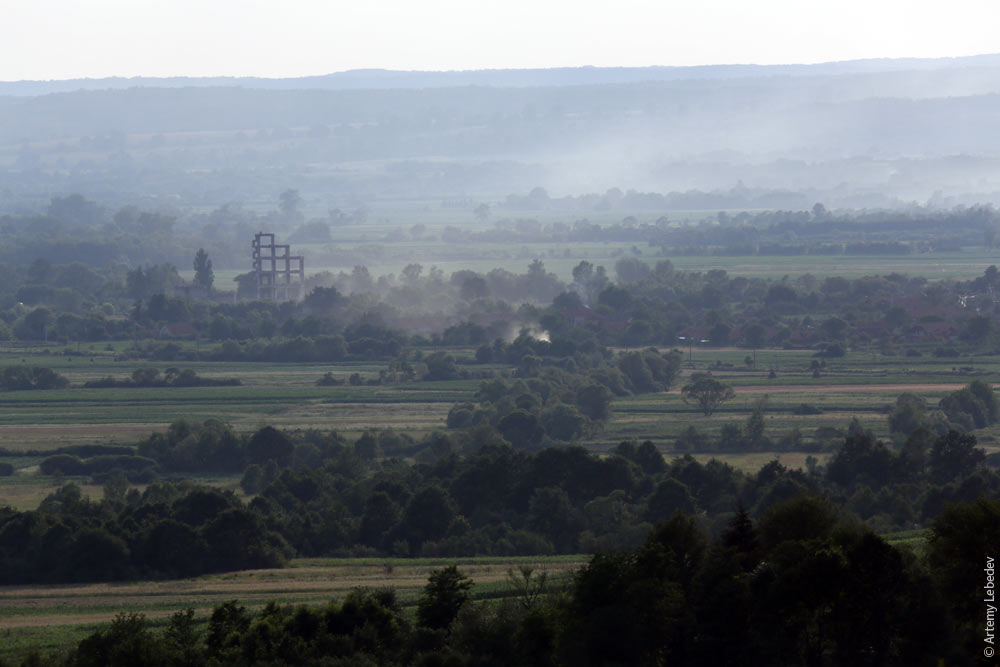 A sad socialist-looking stele with a god-awful typeface is crowned with the European twelve stars. Romania is now part of the EU. 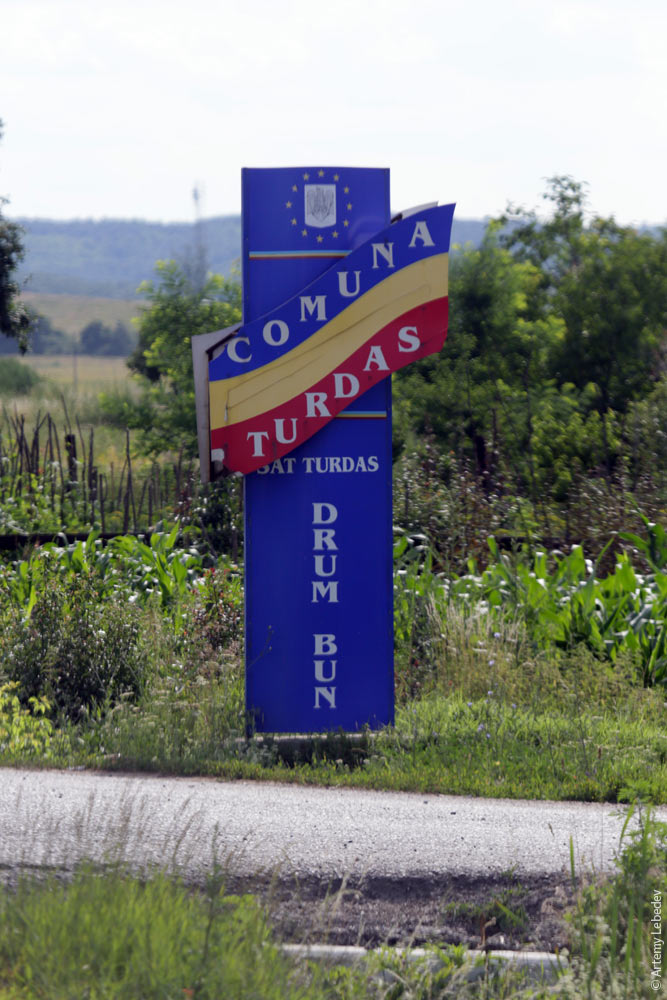 Newly-minted Europeans. 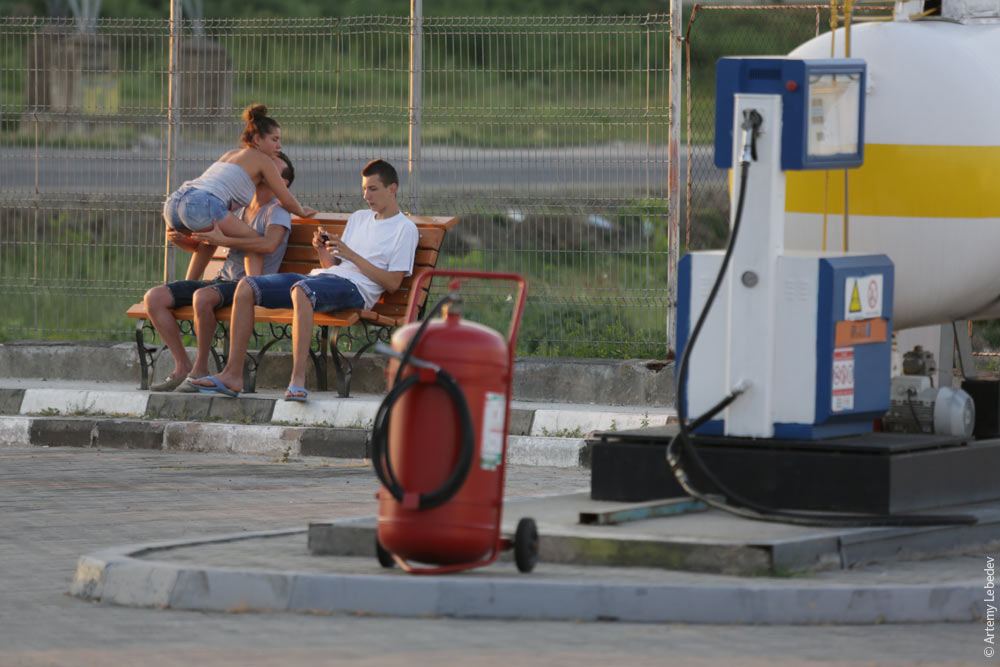 Every town or village has a sign with its name and the speed limit as you drive in. 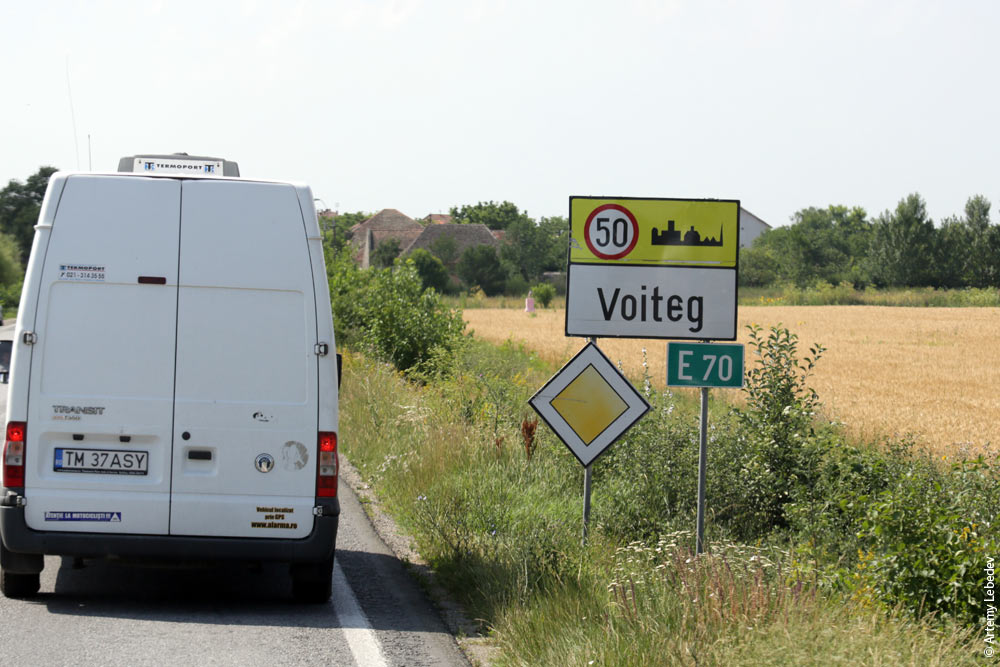 The country is predominantly agricultural, so every decent-sized city has a sign prohibiting horse-drawn carts from driving in the streets. 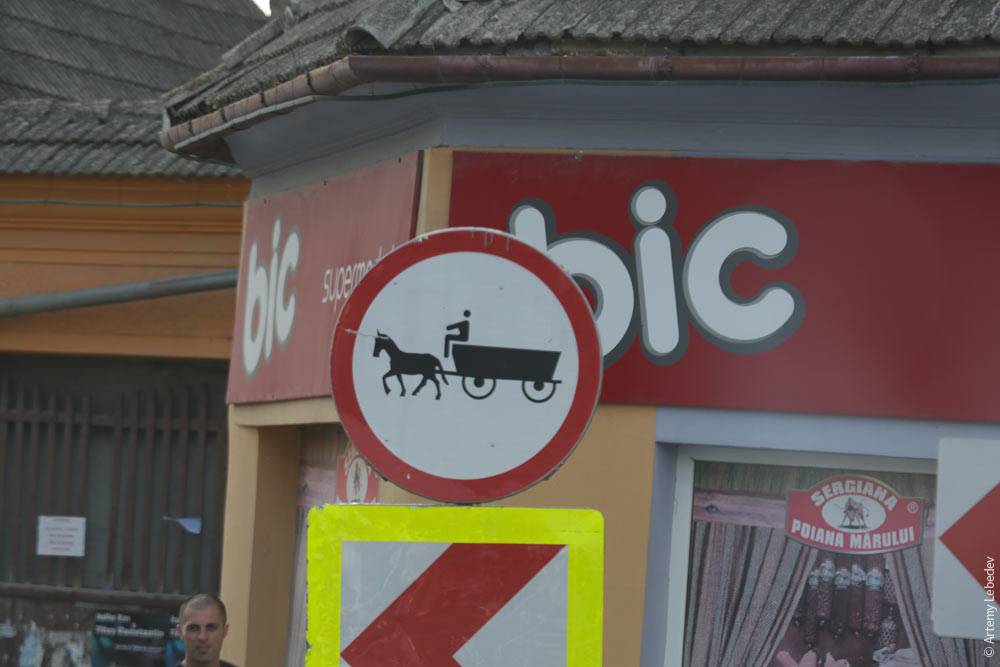 The spindly lines on signs showing traffic flow at intersections look odd in comparison. 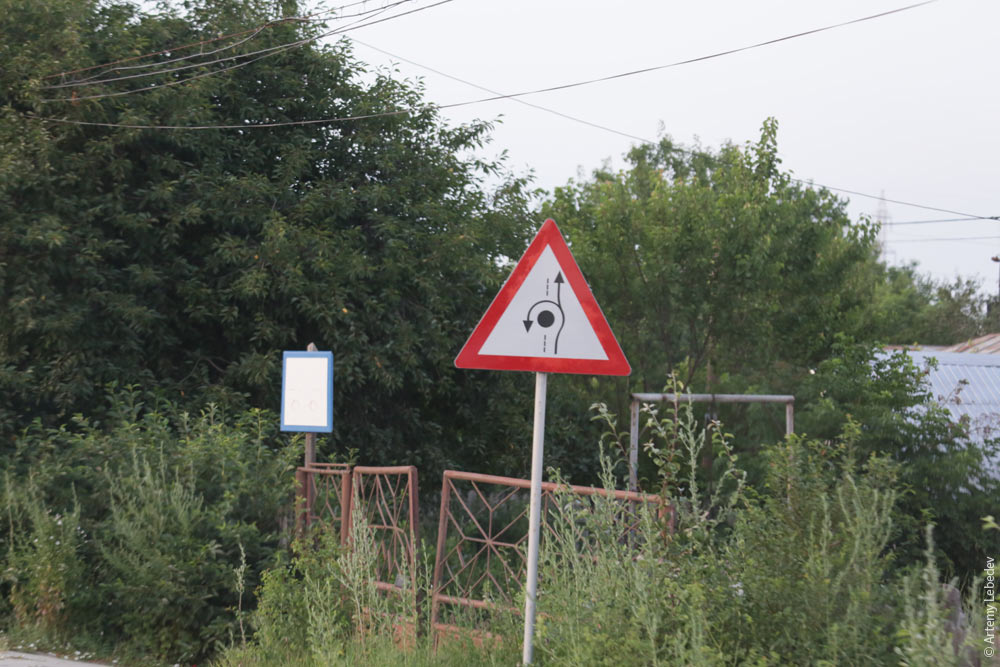 Incredibly beautiful crazing on a “no passing” sign. 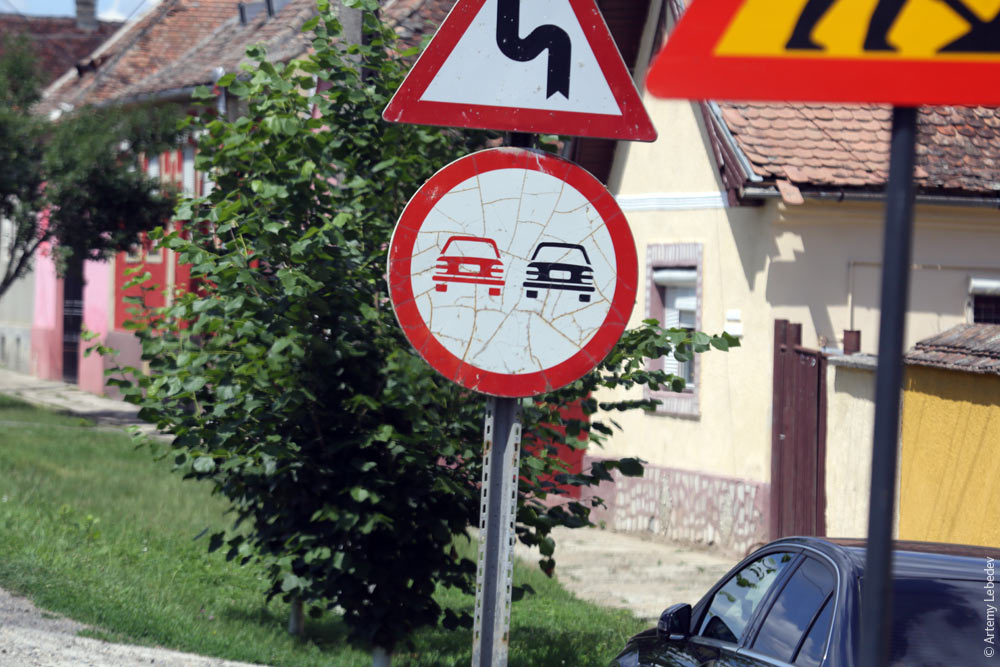 A curious sign warning about the danger of collisions at an intersection. 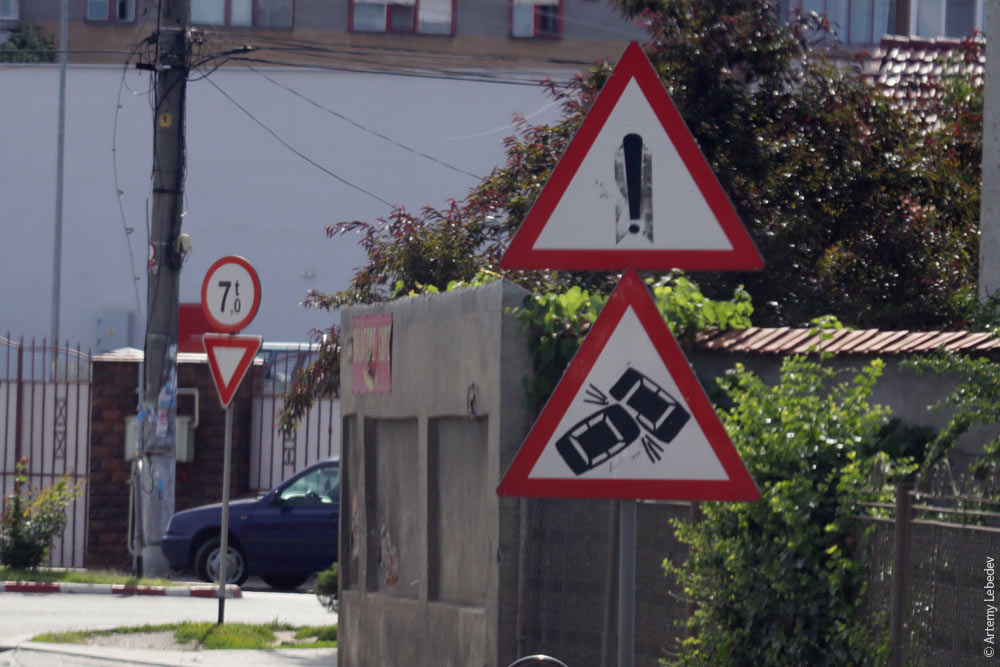 A Romanian digger.  Buses and trolleys on signs have a distinct driver’s window. 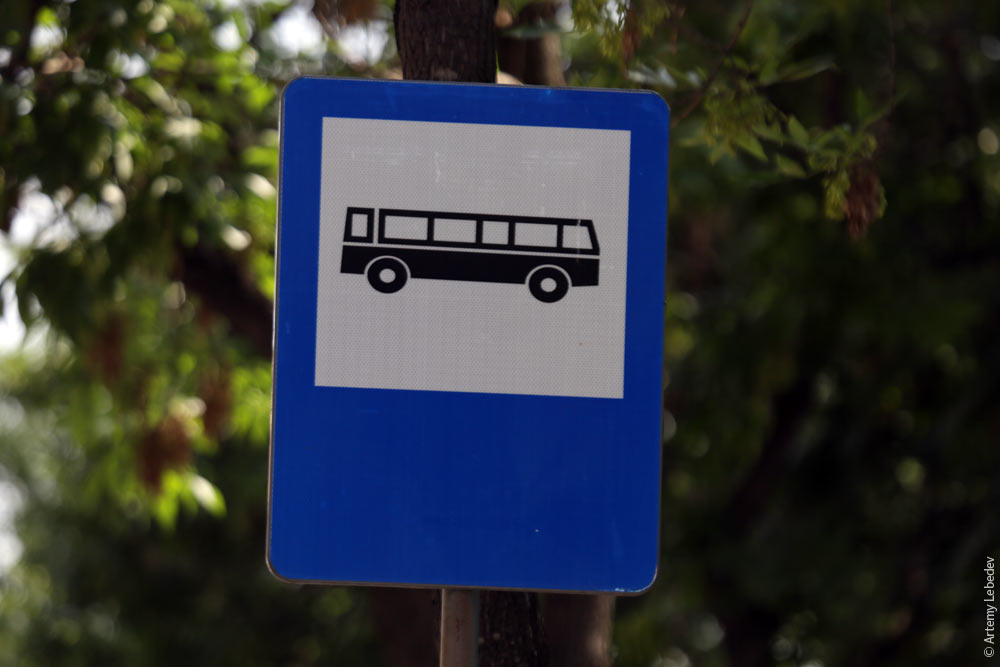 But the “falling rocks” sign tops them all. The rock’s flight trajectory and thump are illustrated with surprising love. 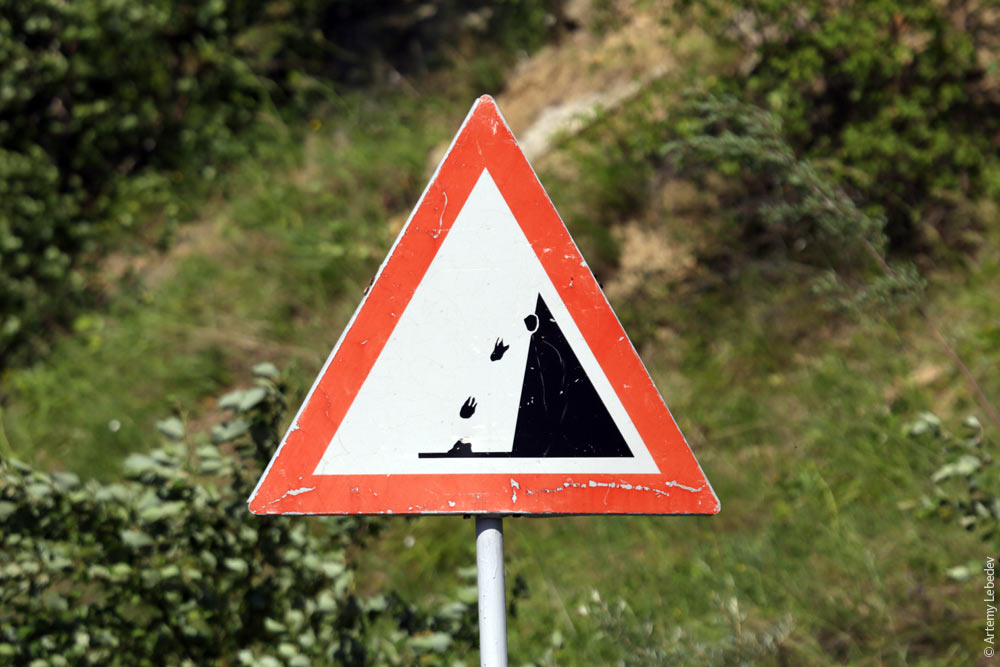 Experimental road surface markings before a zebra crossing: in addition to the zigzags (like in Britain and Mauritius), there’s also a painted red carpet. 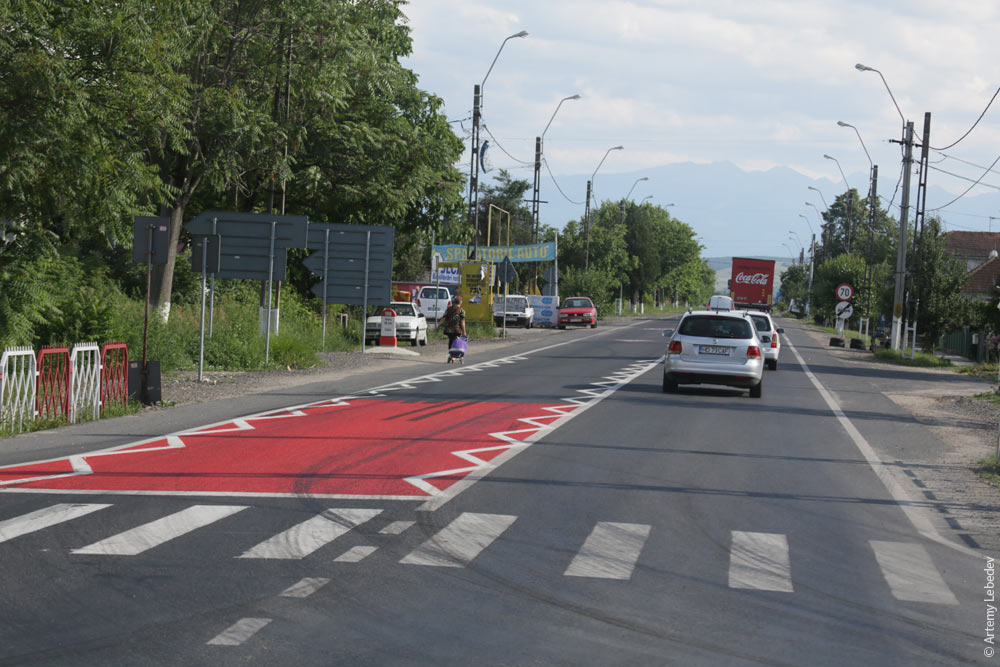 Every small town has one post box, situated more or less in the center of town. 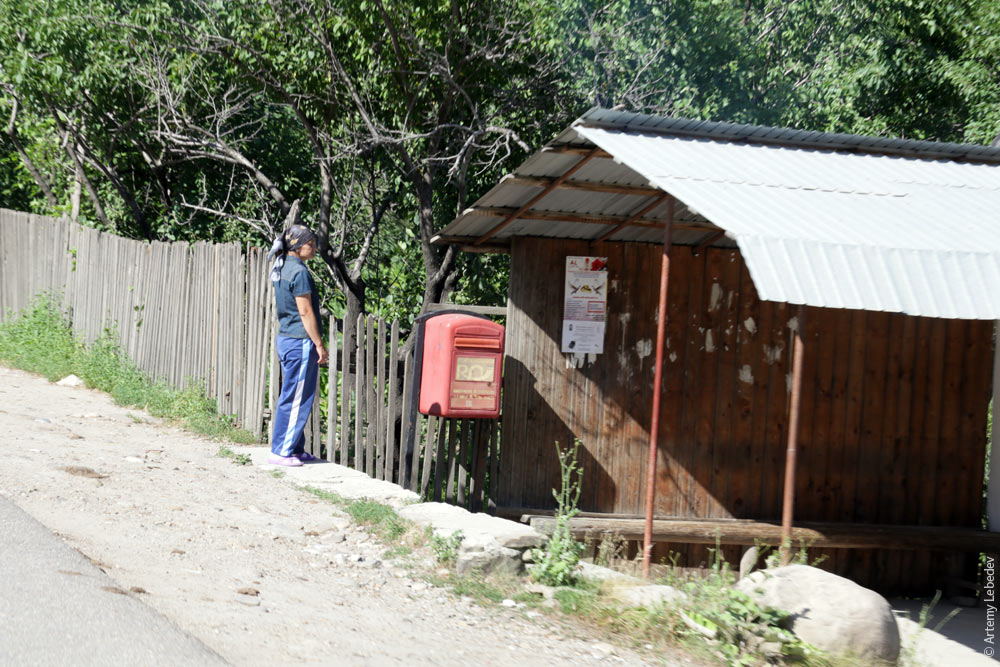 Every city also has one post box. These ones are a bit bigger. There are no random post boxes scattered throughout the streets, they exist only outside post offices or in the main square. 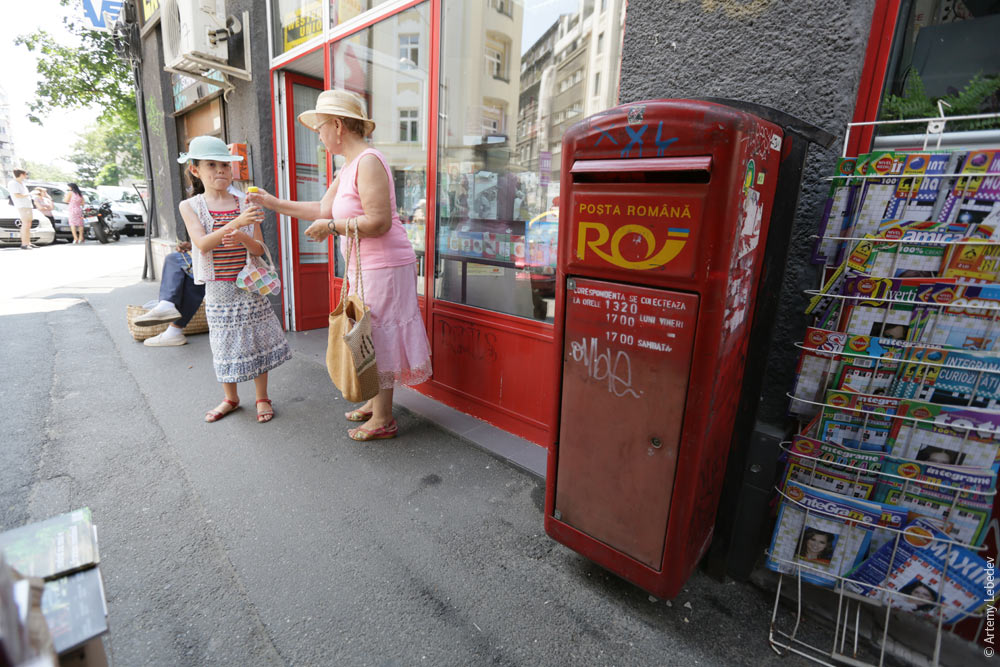 There are kilometer marker posts of the French type (like in Moldova, Laos, Vietnam, Cambodia, Tunisia, French Polynesia, etc.) along all the highways. 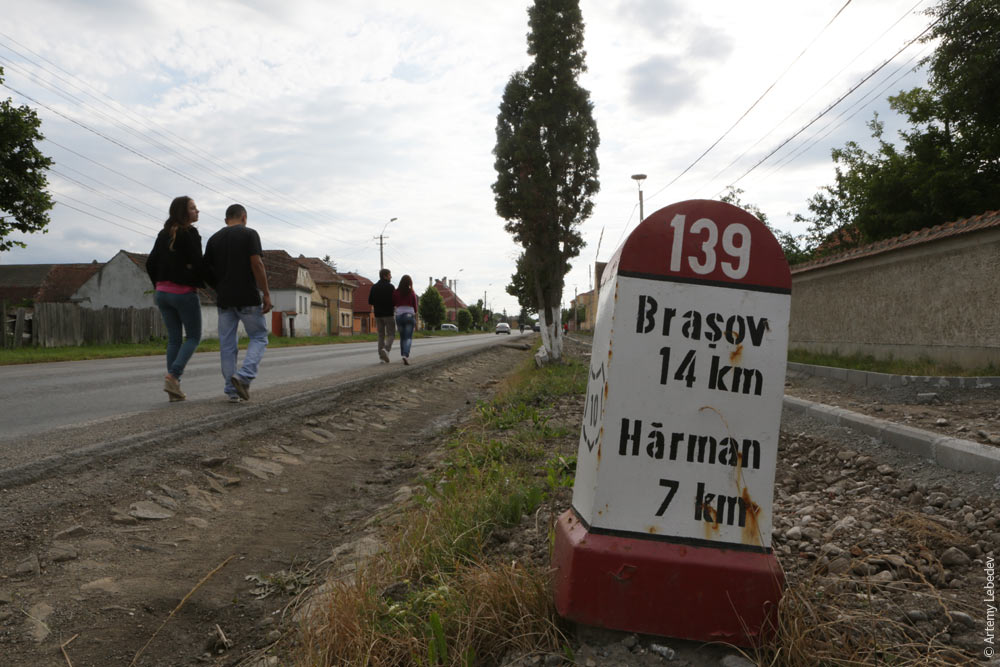 To use the highways, drivers must purchase a vignette, or road tax sticker. 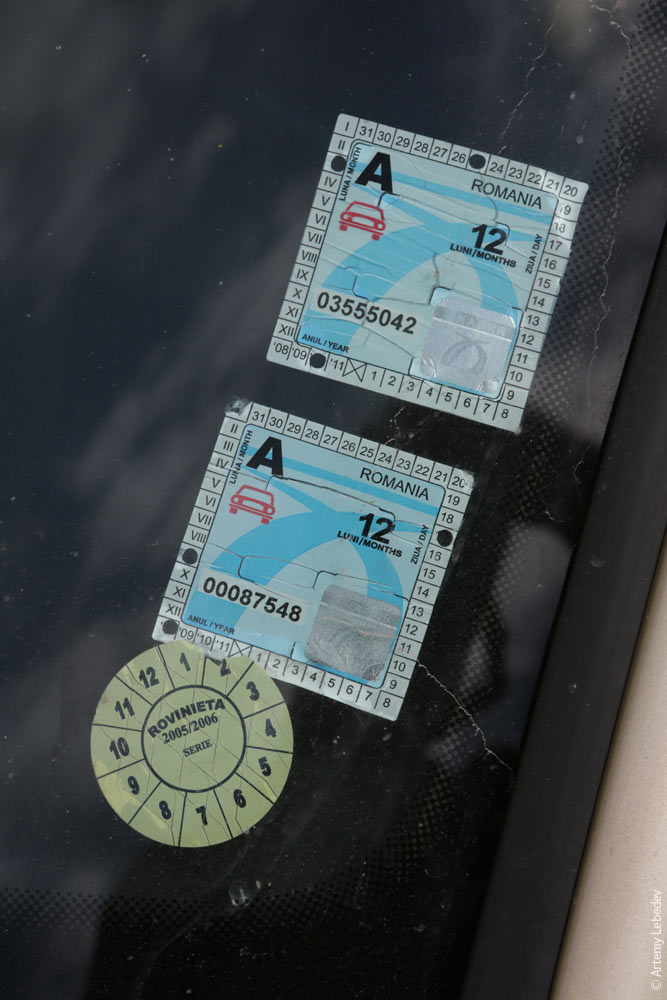 Romania has its own automotive industry: Dacia cars, whose logo resembles a bottle opener, are manufactured here. 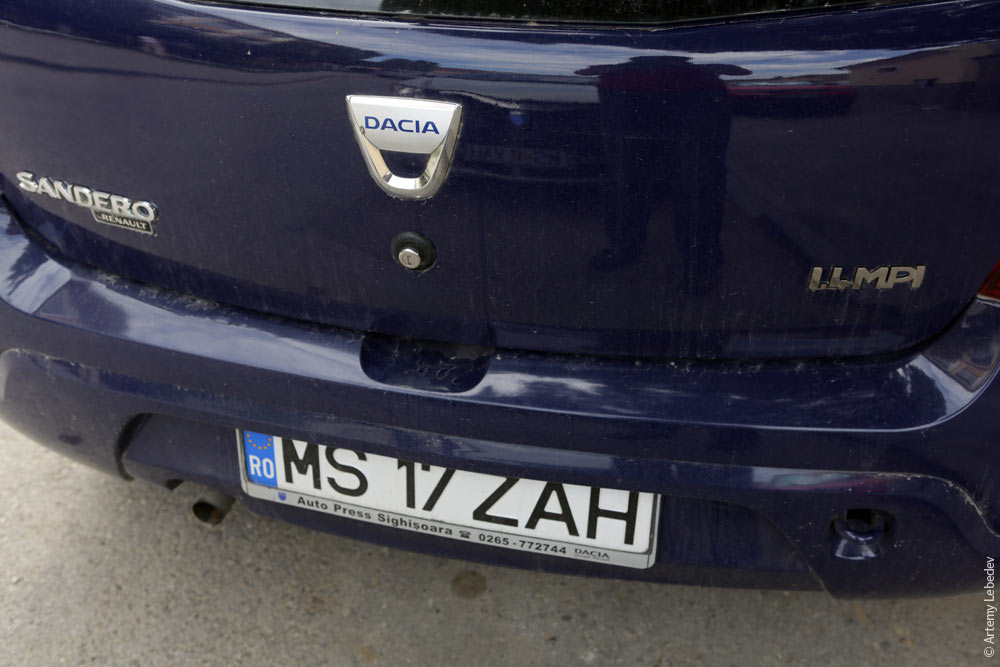 A registration plate. 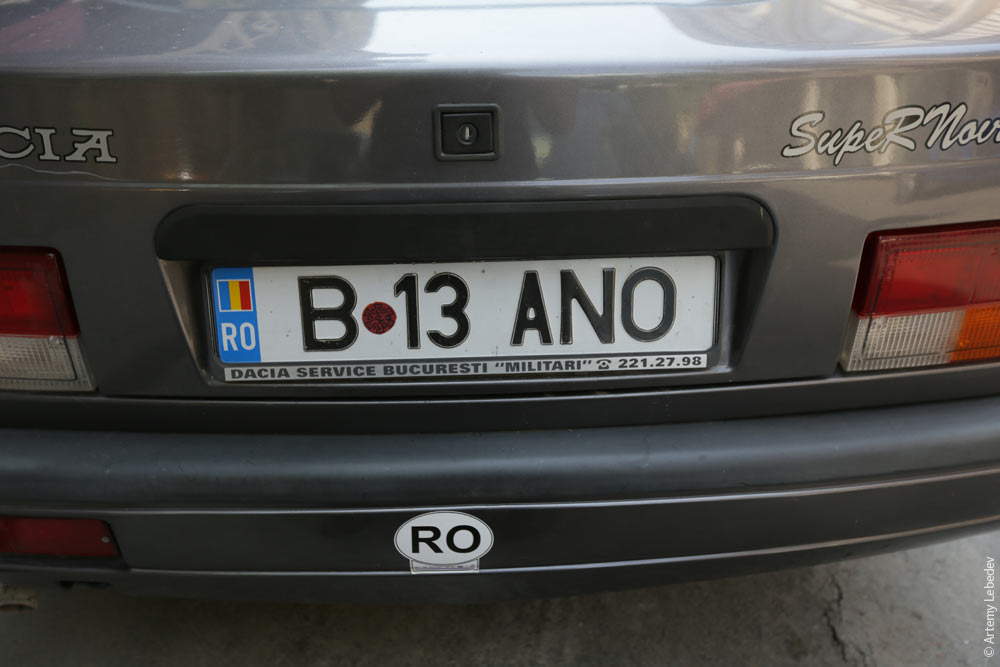 A policeman. 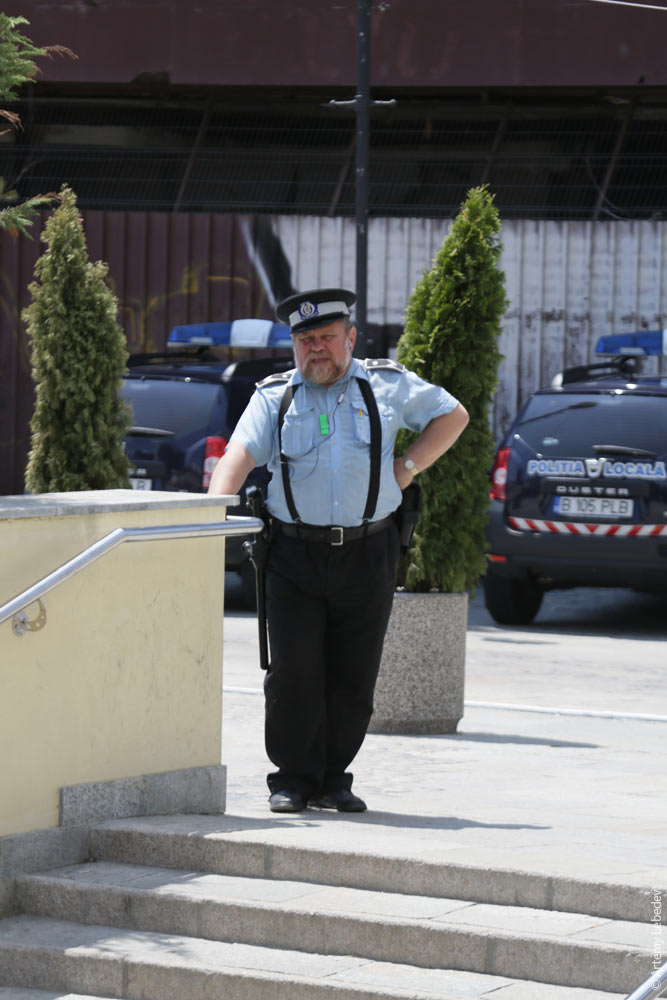 There are lots of beautiful old buildings in the country. And no shortage of Historical Monument plaques to put on them. 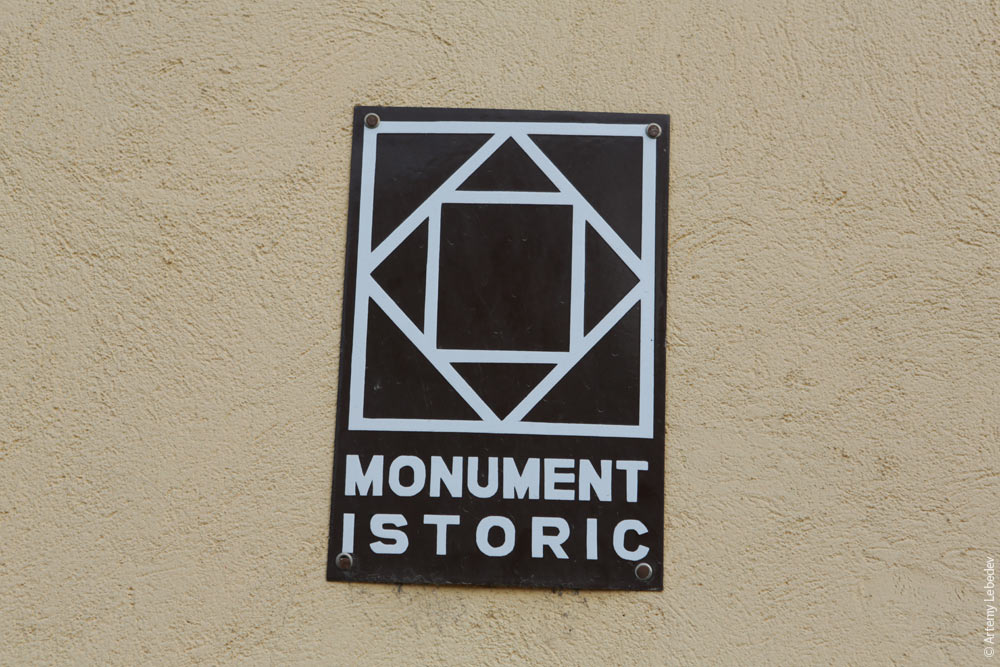 Payphone locations are marked with a pictogram which is clearly visible from a distance. 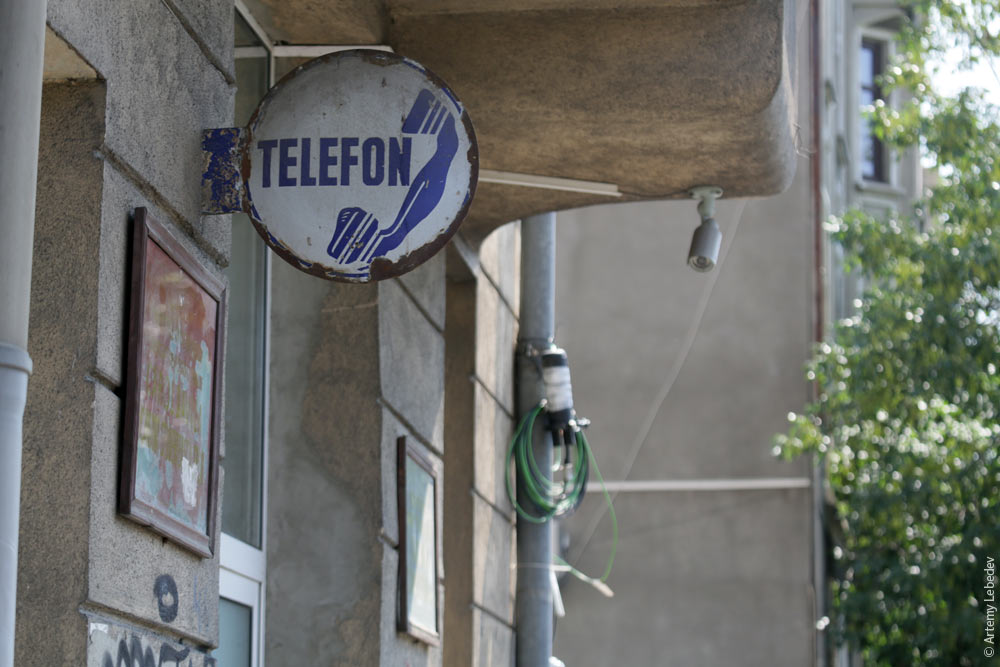 Most payphones are just a phone bolted to the wall, without even a hood. 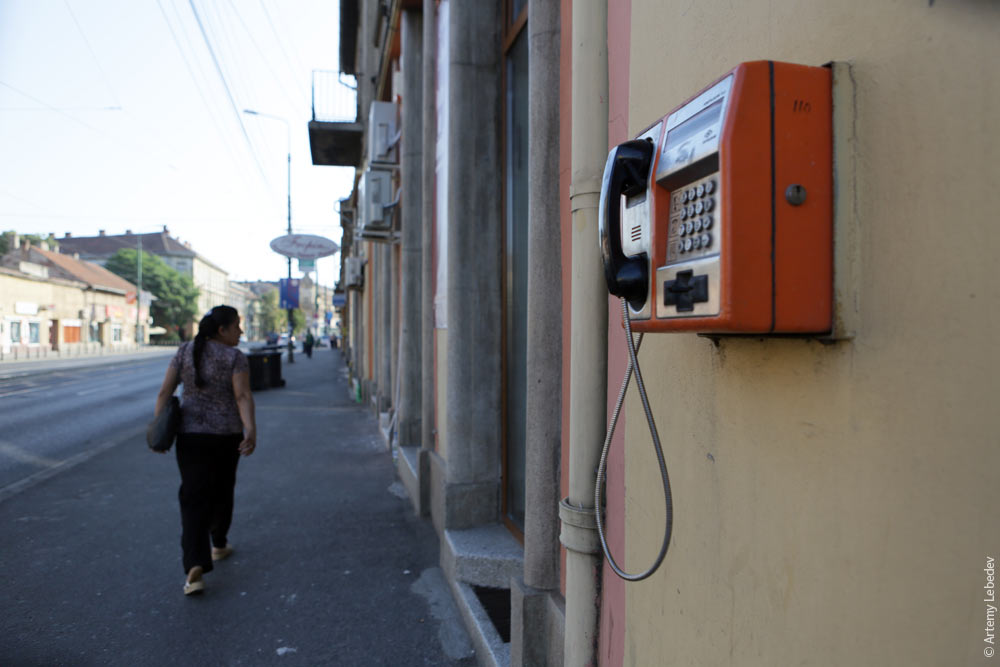 A high voltage sign. 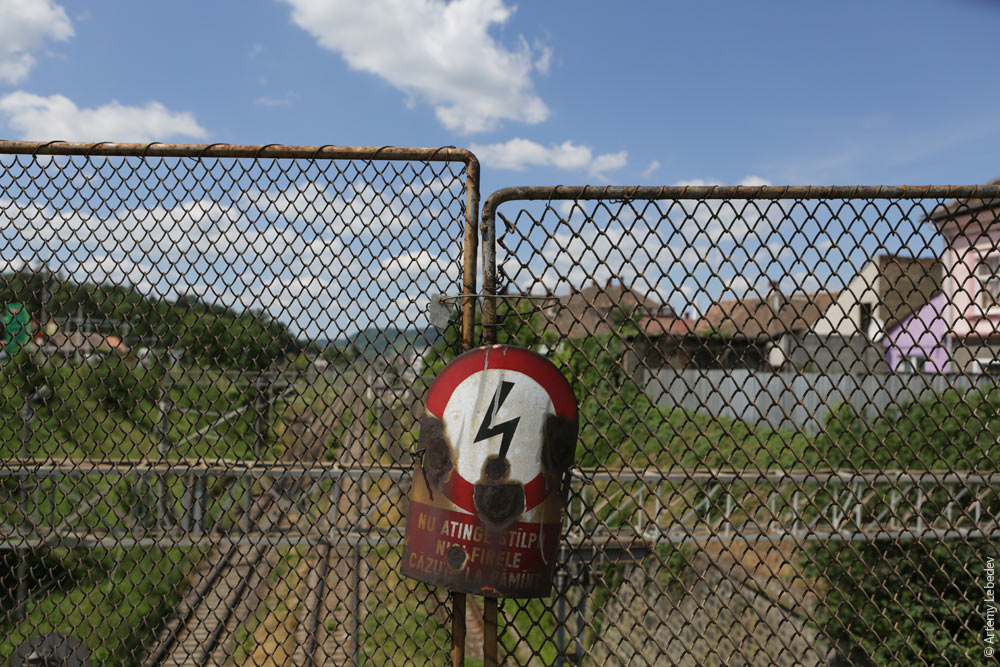 Romanians have a custom of keeping a spare coil of cable on every utility pole. 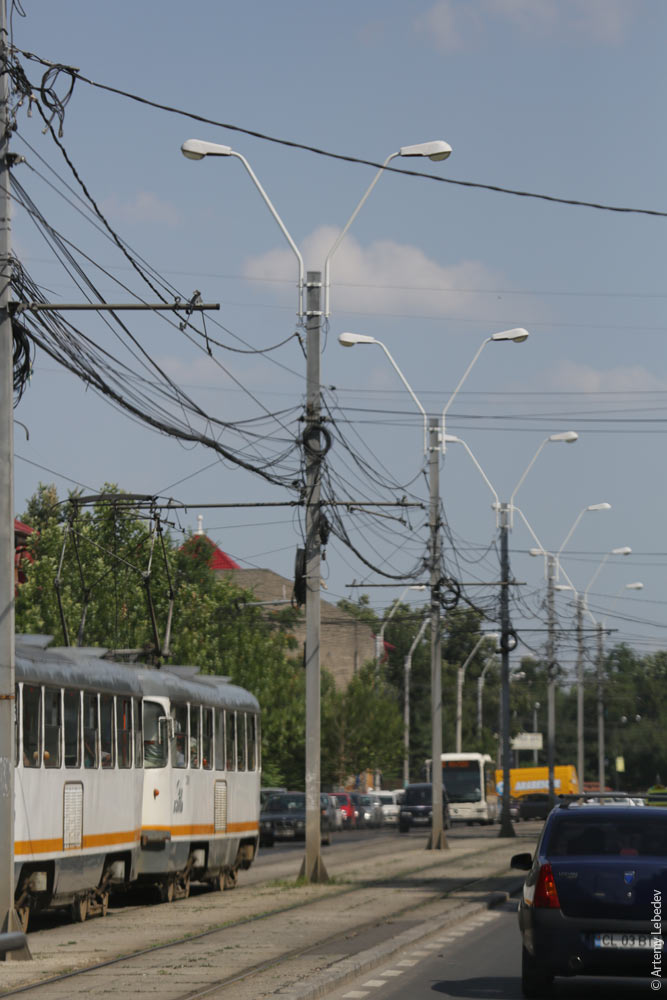 And that’s how picturesqueness and local color is achieved. 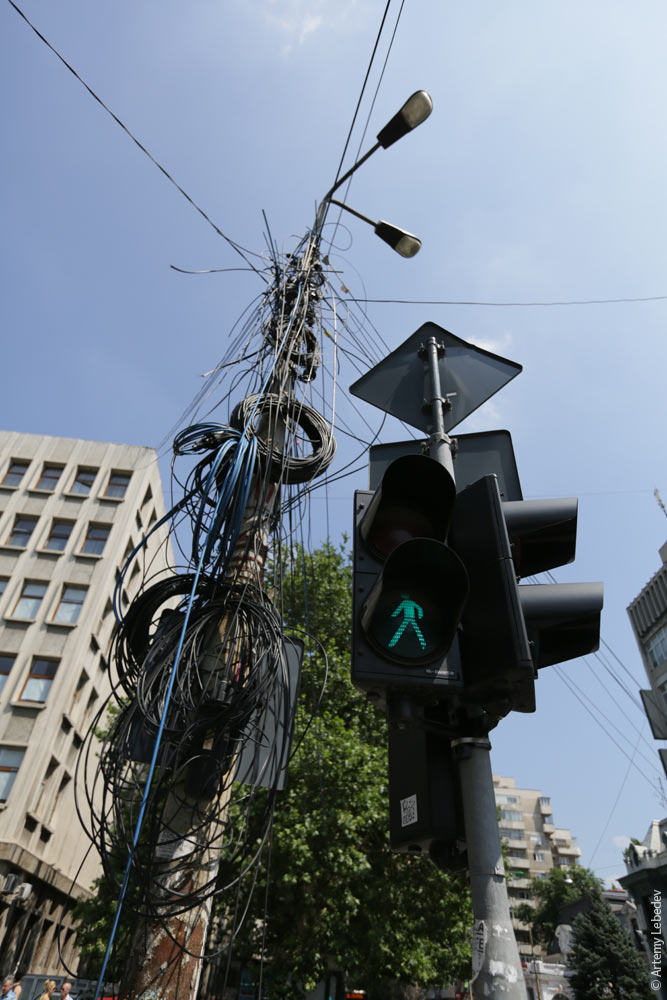 |